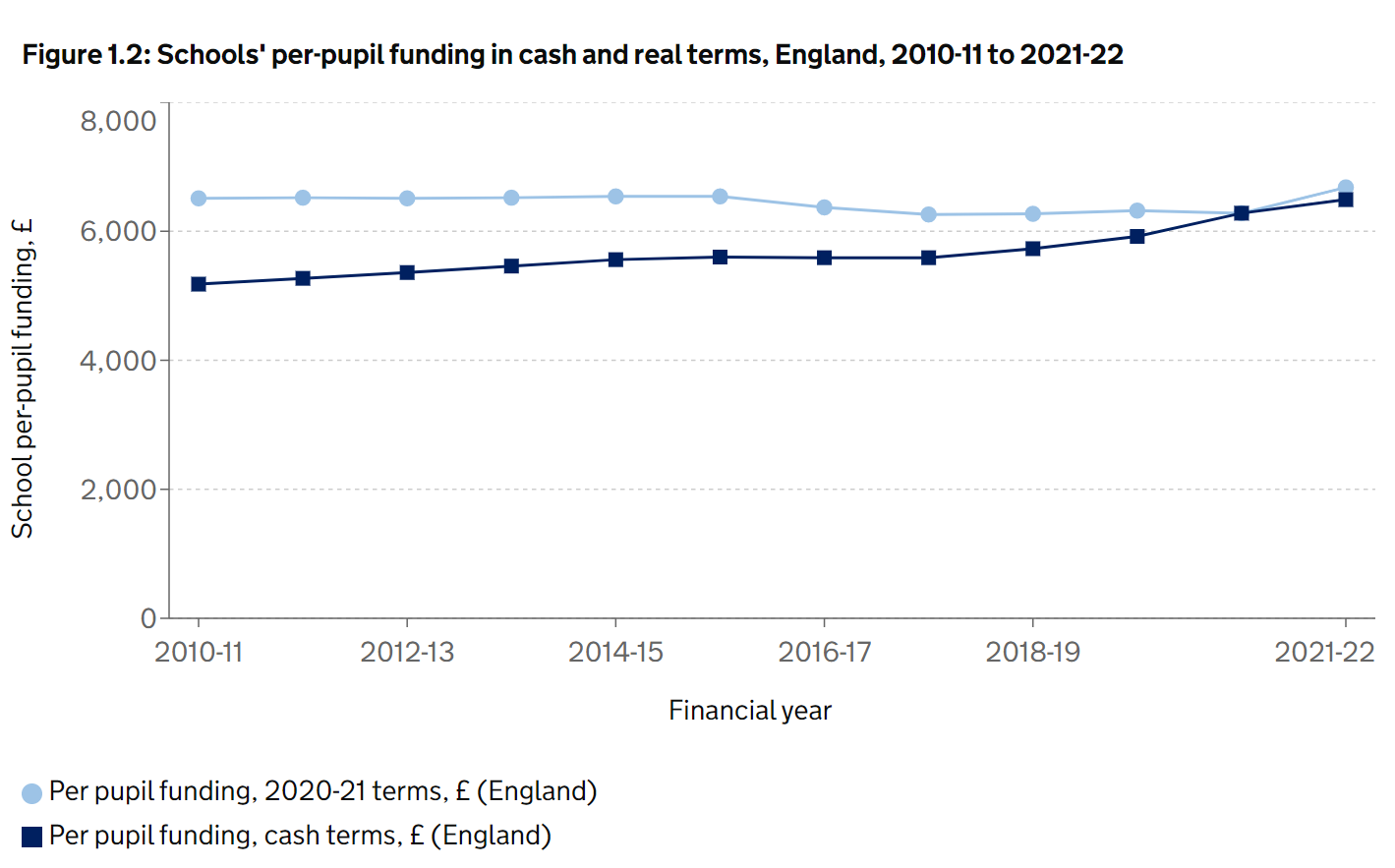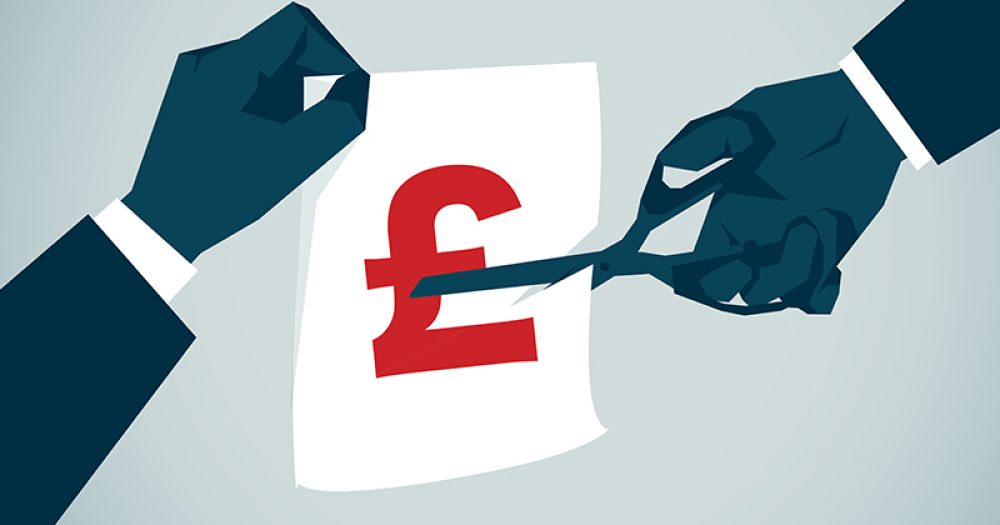Per-pupil funding actually fell in real terms this year after changes to prices as a result of the Covid-19 pandemic were taken into account, leaving the government short of its target to boost budgets to above 2010 levels.
New analysis by the Department for Education shows average per-pupil funding for five to 16-year-olds fell by around 0.6 per cent in real terms between 2019-20 and 2020-21, from £6,320 to £6,280.
It was supposed to rise by 4.1 per cent, but this has been revised after the government updated its measure of inflation to take account of “atypical” movement in prices caused by the Covid-19 pandemic.
It means per-pupil funding actually fell slightly in real terms in the first year of the government’s new three-year funding settlement.
A pledge by the government to boost funding to above 2010 levels has also not been met. Last year, the department said per-pupil funding would be 2.1 per cent higher in 2020-21 than it was 10 years before based on today’s prices.
However, according to the government’s analysis, funding stood at £6,280 in 2020-21, whereas the funding in 2010-11 based on 2020-21 prices was £6,510.
For the purposes of this analysis, per-pupil funding includes high needs funding, pupil premium and grants to pay for free school meals, teacher pay increases and pension employer contributions, hence why the average figures are higher than core funding rates.
The government announced a new three-year funding settlement for schools in 2019, which will see the overall schools budget increase by £7.1 billion in cash terms by 2022-23.
However, today’s data shows that in the first year of the new funding settlement, the amount going to schools for each pupil actually decreased once price changes over time are taken into account.

The DfE said that it used the government’s GDP deflator figures to calculate price changes in public sector expenditure, but that the latest data displays “atypical year-on-year movement in the data for 2020-21 and 2021-22 particularly, which has arisen as a result of the impact of the Covid-19 pandemic”.
“At the 2019 Spending Round, school funding in 2020-21 increased on a per-pupil basis by more than the level of inflation, based on the GDP deflator data available at the time. This was presented in the previous edition of these school funding statistics. However, the latest revisions to the GDP deflator data include an upward revision in 2020-21.”
The analysis does project that in 2021-22, the second year of the funding settlement, per-pupil funding is expected to rise by around 6 per cent in real terms based on the 2019 funding levels.
According to the DfE, real-terms per-pupil funding “is expected to be 2.6 per cent higher in 2021-22 compared to 2010-11, and 2.1 per cent higher compared to 2015-16”.
A spokesperson said: “All teachers and support staff are working tremendously hard to ensure children’s education can continue through this pandemic. We know resources are an important part of that.
“Last year we launched an exceptional costs fund that gave every school the opportunity to claim up to £75,000, based on their size; the covid workforce funding supports schools facing significant budget pressures and staff absences; and the £1 billion Covid catch up programme is supporting students to catch up on lost learning.”








Your thoughts